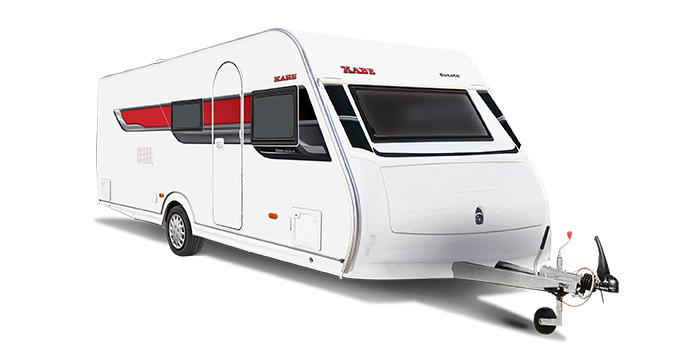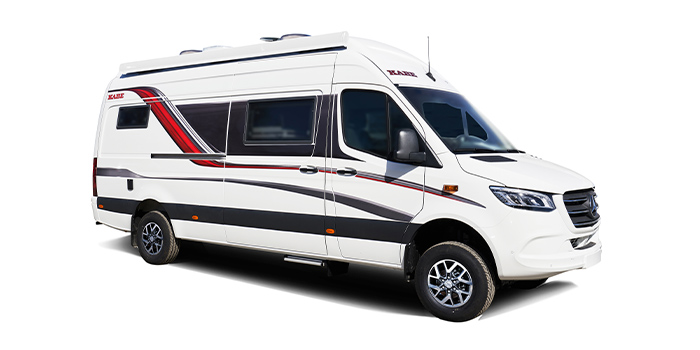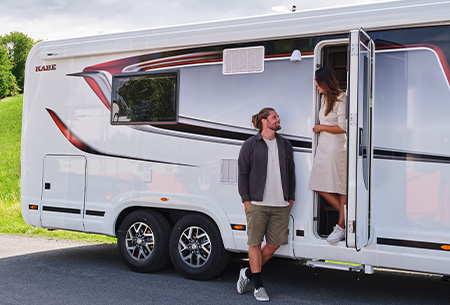It started as a vacation project and ended with an initial public offering…
“We’ve done well,” Kurt Blomqvist shyly states. When asked if he ever dreamt of this level of success, the answer is short:
“No, I never even considered that.” Clearly the founder of KABE is a man who prefers looking ahead, rather than back. Still, the story is like a dream – a true saga about a stubborn man from Småland who grew up in a small business environment.
Started in his garage
The year was 1958 and Kurt Blomqvist was working on a vacation project in his garage at home. His family would not be staying in a tent this summer. In the garage, a caravan was taking shape. Three weeks prior to departure, the caravan was complete. Kurt was proud of his creation and when a neighbor made him an offer to buy the caravan, he couldn’t resist the temptation to sell. But the joy was short lived. His family had been looking forward to vacationing in a real caravan and they were so disappointed that Kurt was forced back to the garage to build another.
Evenings, nights and weekends. Kurt, who was the director of air traffic control at Saab in Jönköping, worked tirelessly around the clock. He almost completed the caravan in time for the vacation. As they were ready to depart, materials and quite a few tools were loaded into the caravan. While the rest of his family enjoyed their time away at a number of camping sites, Kurt continued to work and returned home with a completed caravan – which he immediately sold. That Fall, the construction of caravans continued in the garage and the following summer eight more caravans were ready to hit the road. This initial model was named Komet (Comet) 250 and it was 2.4 meters long and 1.8 meters wide. The price was a modest 3,800 Swedish Kronor, not even half the cost of a new Volvo PV at the time.
Wanted to go on
The production continued and four years later Kurt was getting tired of the double workload. But to leave a well-paid job vs. the gamble of running a small business was not an easy choice.
“I started from scratch and developed the Swedish robots. I was at a point where the project felt complete. Maybe it was time to move on to something else.” The rest is modern Swedish caravan history. From the garage in Jönköping, it’s a straight line to the company group today headquartered in Tenhult. KABEs reputation grew and the company’s sales took off. It would have been easy to stop there. But not Kurt Blomqvist. During the 1980s and 1990s, he was responsible for every invention introduced by KABE: Ecoprim insulation (put into use in 1987), waterborne heating system AGS (patent application filed in 1988), plastic joists (patent application filed in 1989) and ventilated walls (1992). “I have always enjoyed the technical part. I tried to set aside half of my time for development and construction. For me personally, administrative work is more of a necessity.”
Creative workshop
To continue the development work in peace, Kurt installed a workshop with personnel that he managed himself to perform his experiments. This is where he was most comfortable, much more so than his office as the company’s CEO. The work there was without a doubt the most fun for Kurt. He talks about his development work with joy, not pride. KABEs flexline-system is a good example. The ability to manufacture caravans and motorhomes with so many different floorplan solutions without sacrificing the production cost is perhaps the key to KABEs increasing success these last years. “As a matter of fact, the flexline-system enabled us to be more cost efficient. By building base modules we can keep a more even production pace. Normally caravans and motorhomes are built in the late winter and early spring to minimize the cost to store them. But it’s impossible to work this way. Our employees work year-round. Instead, we complete our caravans and motorhomes to 60%. When the sales start to kick in we get them ready for our customers.
“For example, our refrigerator and heating unit suppliers agree to deliver large orders to us in the spring. We avoid any storage costs by having our suppliers absorb that cost.” Kurt says, making it sound so simple.
Kurt Blomqvist died in his home Målen, June 5th, 2011.
Footnote: The name KABE is derived from Kurt Blomqvist’s initials ”KB”. In Swedish it is pronounced ”KÅBE” (English /kô.be/). But that name was not available. Kurt then eliminated the circle above the ”Å”, but this new name was too close to an existing company – KABI. Inventive Kurt went on to name his company “Karosseri AB Elit” (translation: ”Bodyshop Elite Inc.”). That’s right! With the abbreviation “KABE”. Today, the company name is KABE AB. The Swedish authorities finally gave in.














